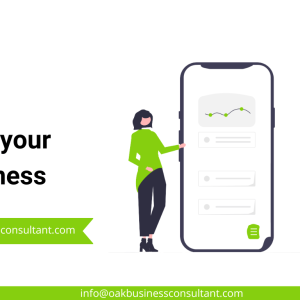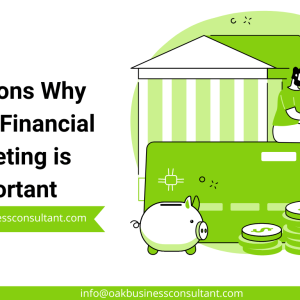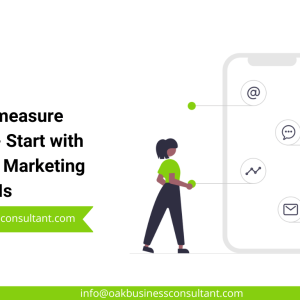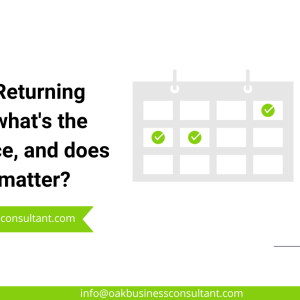5 Best Methods to Effectively Plan and Budget for your Company
5 Best Methods to Effectively Plan and Budget for your Company
Planning and budgeting are essential components of any successful business. By creating a plan and budget, businesses can identify their goals, allocate resources accordingly, and track progress toward those objectives. The plan and budget of a company should be detailed enough to provide clarity on how the company will reach its desired outcomes. Also, a budget outlines how much money is available for each activity. With careful planning and budgeting, businesses can ensure that they have adequate resources to achieve their goals.
In this article, we will discuss the basics of plan and budgeting. Then we will shed some light on their differences. For example, financial plan vs budget, or budgeting vs financial planning, etc. After that, we will also look at the amalgamation of the plan and budget. For example, what is budgeting financial planning or financial budget planning? No matter in what order you say or write these terms, the crux is that plan and budget are essential components of any successful business strategy. So, with careful planning, businesses can ensure they have all the resources required to achieve their goals and stay competitive in today’s rapidly changing market. Whether you’re just starting out or managing an established company, planning and budgeting are key tools for success. So, let’s dive in and explore the ins and outs of the plan and budget.
Plan and Budget – The Basics
Many businesses struggle to plan and budget effectively. However, with careful planning and budgeting, it is possible for any business to succeed. To plan and budget effectively, you first need to understand the basics of these concepts.
At its core, a plan refers to a range. In essence, it specifies what you need to do to achieve specific objectives. Similarly, budget refers to an estimate of financial expenses or income over a specified period of time. Both plan and budget are essential tools that help businesses manage their resources effectively.
Plan and Budget – What’s the Difference? | Financial Plan Vs Budget
There are many differences between a plan and budget. For example, financial plan vs budget or budgeting vs financial planning. At its core, a financial plan outlines your long-term goals for your business. It typically covers three to five-year periods and focuses on short-term cash flow needs and long-term investments or acquisitions. It also considers potential risks and opportunities that may arise during that time. A financial plan can help provide insight into how you should use your resources to maximize growth and profitability over the long term.
On the other hand, a financial budget is much more focused than a financial plan in that it looks at only one particular fiscal year. It considers income and expenses but also dives deeper into specific areas like marketing costs, employee salaries, taxes, etc. A budget helps you understand where you stand financially at any given moment so that you can make wise decisions about managing your resources to achieve your short-term goals for the year.
Financial plans and budgets are two essential tools for any business owner or manager who wants to stay on top of their finances. While both involve understanding how much money is coming in and going out, they have different purposes. Financial plans are all about identifying long-term goals for your business. In contrast, budgets focus on ensuring your short-term objectives become easy to accomplish. Knowing when to use each will ensure that you can make intelligent decisions about managing your resources throughout the year.
Before coming to the five best methods to plan and budget effectively, let’s look at some of the key benefits of budgeting and financial planning.
Plan and Budget – the Keys to Financial Success
The Benefits of Budgeting
When it comes to running a successful business, one of the most important aspects is financial budgeting. Without an effective budget, businesses cannot plan for their long-term success or respond effectively to unexpected events. Here are five key things that make a financial budget the key to success for small businesses and startups.

i. Planning Ahead
A sound financial budget allows you to plan ahead by setting goals and objectives. You can then evaluate them in the future for a better sense. This helps you stay on track with your business’s growth and prioritize tasks according to importance and urgency. A financial budget also lets you know where your money is going. So that you can make any necessary changes before it’s too late.
ii. Monitoring Cash Flow
With a well-structured financial budget, it’s easier to keep track of cash flow and ensure that there is enough money coming in each month to cover all expenses. This allows you to identify potential problems before they become too big. While also giving you time to adjust accordingly and mitigate any losses due to poor cash flow management.
iii. Managing Growth
A good financial budget will help you manage your business’s growth by keeping track of all incoming revenue sources. Not only that, but it also aids in identifying areas where you may need more capital for expanding operations or making investments into new products or services. It will also help you anticipate any potential risks. So that you can make well-informed decisions about when and how much money you should spend on them.
iv. Allocating Resources
A sound financial budget will help businesses allocate resources more efficiently by considering expected costs and potential rewards for each decision made by the company’s leadership team. By having an accurate picture of the overall finances at hand, businesses can determine what investments should be made first to maximize returns while minimizing risk exposure.
v. Reducing Stress
Last but most importantly, a comprehensive understanding of your company’s financial situation means less stress. Especially when trying to make critical decisions about operations or investments. The reason? This knowledge will guide how best to achieve desired results without putting too much strain on existing resources. Or even incurring unnecessary expenses along the way.
Ultimately, having a detailed financial budget is essential for any business looking for long-term success. That is due to its ability to provide direction when
- planning ahead,
- monitoring cash flow,
- managing growth opportunities,
- allocating resources appropriately, or
- reducing stress levels among decision-makers within the organization.
With the right approach towards creating one—and ensuring that it remains up-to-date with changes in market conditions—a solid financial budget can serve as one of your greatest assets when striving toward prosperity in today’s competitive business environment.
The Benefits of Financial Planning
When it comes to starting a business, many people focus on the present moment. And while this is important, it’s just as critical to take a step back and look at the bigger picture – namely, how you plan on making your business successful in the long run. This is where financial planning comes into play. Let’s look at the five key elements that make up an effective financial plan for small businesses and startups.
i. Cash Flow Management
The first element of any financial plan is cash flow management. This means understanding your current income sources and anticipating future expenses. So you can ensure that your money is always going toward the most important investments for your business. To do this effectively, you need to understand where your money is coming from and where you are spending it. This will help you identify areas where you can cut costs or increase profits.
ii. Risk Management
Risk management is another key element of financial planning for small businesses and startups. You need to be ready for potential risks that could affect your finances. No matter, whether they’re related to market shifts or other external factors. One way to mitigate risk is to diversify your investments across multiple sectors. As a result, if one area experiences a downturn, others may still remain profitable. Additionally, having an emergency fund can help prevent catastrophic losses in case something unexpected happens.
iii. Tax Planning
Tax planning should always be part of any financial plan because taxes can majorly impact the bottom line of any business. It’s important to understand all applicable tax laws. So you can take advantage of deductions and other tax credits available to businesses to maximize profits and minimize tax liabilities. Working with an experienced accountant who understands the ins and outs of taxes can be highly beneficial when creating a comprehensive financial plan for your business.
iv. Asset Allocation & Investment Planning
When developing a financial plan for small businesses and startups, asset allocation and investment planning are essential components. Asset allocation refers to how you divide up the assets within your portfolio among different asset classes such as stocks, bonds, cash equivalents, etc. At the same time, investment planning involves looking at how these investments perform over time. So you can adjust them accordingly to meet specific goals or objectives, such as growth or income generation over time.
v. Financial Projections & Goal Setting
The final element of any financial plan is setting goals and creating projections based on those goals. Because goals provide direction for where you want to go with your business financially. And projections allow you to see how likely you’ll achieve those goals under certain assumptions. For example, when we consider inflation rates or interest rates. Having these projections helps keep everyone on track toward achieving their goals by allowing them to measure progress against what they had expected.
In essence, a well-crafted financial plan for small businesses and startups lays out all the necessary steps for success. From cash flow management and tax planning through goal setting and projections. In short, it gives entrepreneurs everything they need to make informed decisions about their finances now and down the road. By keeping these five pillars top-of-mind, entrepreneurs will have more clarity around their finances, leading them down a path toward success. So, now that you have a basic understanding of the plan and budget and their scope, uses, and benefits, let’s come to the main discussion. And that is the five best methods to plan effectively and budget for your company.
The 5 Methods to Effectively Plan and Budget for Your Company
As we have already discussed, planning and budgeting are essential components of any successful business. Whether you’re a small business owner or the CFO of a large company, having an effective plan and budget in place can help you:
- make sound decisions,
- increase profits,
- reduce costs,
- secure liquidity, and more.
In this section, we’ll discuss the five best methods to help you effectively plan and budget for your company.

1. Create a Long-Term Vision | Plan, and Budget Effectively
One of the key steps in planning and budgeting is to create a long-term vision for your company. This should include detailed goals for the next few years regarding sales, profitability, funding needs, etc. Having a clear vision will help you to keep focused on what is important and make sure that your short-term plans align with long-term goals. It will also serve as a guide when making decisions about investments or other expenses.
Establish Goals
The first step in creating a long-term vision is establishing your goals. What do you want your company to achieve? Think about where you want your business to be in 5 years, ten years, or 20 years. Consider both short-term goals (e.g., increase revenue by 15% over the next year) and long-term goals (e.g., become a leader in the industry).
Analyze Your Market
Once you have established your goals, it’s time to analyze your market. What industry trends are happening? Who are your competitors? What strategies have they used to gain an advantage? What can you learn from their mistakes as well as their successes? Understanding how the competitive landscape looks will help inform your decisions moving forward.
Set Objectives
Now that you understand where you want to go and who you’re competing with, it’s time to set objectives to help achieve those goals. These objectives should include both short-term actions (e.g., hiring additional staff) and longer-term plans (e.g., investing more heavily in research and development).
Allocate Resources
Once you have identified what resources you need to achieve each objective, it’s time to allocate them accordingly. This includes financial resources, such as capital investments. And human resources include hiring new employees or training existing ones for new roles or responsibilities. You should allocate your resources strategically to ensure maximum efficiency with minimal waste or overlap between projects or initiatives.
Monitor Progress
Finally, it is important for companies to regularly monitor progress towards achieving their long-term vision objectives so that any changes can be made quickly if necessary or if better alternative options present themselves down the road. This could include regular performance metrics reviews or customer surveys every few months. All this is to receive feedback on how customers perceive your products/services/brand overall compared to competitors.
Crafting a long-term vision requires careful thought and consideration across many different factors, including setting realistic goals based on current market conditions, analyzing competitor strategies, setting objectives that are measurable yet flexible enough for changing conditions over time, allocating resources appropriately based on those objectives and then monitoring progress regularly over time so that course corrections can be made when needed. A comprehensive approach like this will ensure that businesses remain focused on their ultimate goal of succeeding now and into the future.
2. Analyze Your Finances | Plan and Budget Effectively
The next step is to analyze your current financial situation. This includes creating projected income statements based on past performance, analyzing current cash flow patterns, and identifying areas where expenses can be cut or investments made. Analyzing your finances thoroughly will give you greater insight into where you are spending money and how you can allocate it more efficiently.
What Does Analyzing Finances Involve?
Analyzing finances is about understanding your financial position and making strategic decisions based on that information. This includes assessing current financial performance, preparing forecasts and budgets, developing strategies for achieving financial goals, and tracking key performance indicators (KPIs). It also involves staying up-to-date with changes in the economic environment that could affect your business.
Analyzing finances requires an in-depth understanding of your financial reports, including income statements, balance sheets, cash flow statements, and other documents that show the movement of money. You should also be familiar with key figures such as net income, operating expenses, overhead costs, and total assets. Additionally, you’ll want to understand how different factors, such as sales volume or interest rates, can affect those figures over time.
Steps for Analyzing Finances
* Gather Financial Information
The first step in analyzing your finances is collecting relevant data from various sources such as accounting records, bank accounts, tax returns, etc. This will help you get an accurate picture of your current situation.
* Performance Analysis
After gathering the data, you’ll need to analyze it to identify any potential opportunities or threats that could impact your performance over time. For instance, if you notice sales declining or costs increasing, this could be a warning sign of trouble ahead if not addressed quickly enough.
* Make Forecasts & Prepare Budgets
Once you have an accurate picture of where things currently stand, it’s time to start making predictions about what might happen based on market trends or other external factors that could affect your business. Then use this information to create a budget outlining expected revenue and expenses so you can stay on track financially over the long run.
* Track Performance & Make Adjustments
Finally, keep track of actual performance compared to budgeted performance so that you can make adjustments when necessary to stay on track with your goals. It’s also important to review reports regularly to identify any potential issues quickly before they become problematic for the business.
Analytics is essential for any successful business plan. It helps give an accurate assessment of current financial health while also giving insight into future trends that could affect operations. By following these steps outlined above – gathering information, analyzing performance, creating forecasts & budgets – business owners will be well equipped with the knowledge needed when planning and budgeting for their company’s future success.
3. Set Realistic Goals | Plan and Budget Effectively
Setting goals is an integral part of running a successful business. Having a goal in mind that you can strive for is important, but it’s equally important to ensure those goals are realistic and achievable. Setting unrealistic goals not only sets you up for failure but can also cause unnecessary stress and frustration. So how do you set realistic goals? Let’s break down the process step-by-step.
Step One: Do Your Research
The first step in setting realistic goals is doing your research. You need to understand the current state of your business and the industry. Look at past performance, assess competitor activity, and analyze market trends before deciding on any specific objectives or targets. This will help you get an accurate picture of what is possible within the given timeframe so that you can set achievable goals.
Step Two: Be Specific
Once you have done your research, it’s time to start setting specific targets. Make sure each goal is clear and measurable; this will make it easier to track your progress and measure success or failure. If your goal isn’t specific enough, it will be difficult to know when (or if) it has been achieved. For example, instead of just saying “increase sales”, specify exactly how much sales should increase and when you should achieve it.
Step Three: Break Down Your Goals
Another important step in setting realistic goals is breaking them down into smaller chunks that can be easily accomplished over time. This allows you to see progress as you move towards achieving your overall objective and gives you something tangible to work towards daily. This helps keep motivation levels high. Breaking down large goals into smaller tasks also means that there’s less risk involved if one part fails. As long as the rest of the plan goes according to schedule, all may still be well.
Setting realistic goals is essential for any business owner who wants their company to succeed. By doing proper research, being specific with targets, and breaking down large objectives into smaller tasks, anyone can create achievable objectives that can lead them toward success. Additionally, don’t forget about additional resources such as online courses or books from experienced professionals. These can provide invaluable insights into setting effective plans for success. With these tips in mind, any business owner should have a good foundation for creating effective plans that get results.
4. Plan Investments Strategically | Plan and Budget Effectively
As a business owner or manager, you know how important it is to plan ahead. You need to have a budget in place that takes into account your company’s needs, both now and in the future. But when it comes to investing, it’s often hard to know where to start. Should you invest in stocks? Bonds? Precious metals? Real estate? Let’s look at all the steps you should take to invest when strategically budgeting for your business.
How To Plan Your Investments Strategically
It’s important to remember that there is no one-size-fits-all approach when it comes to investing. What works for one company may not work for another. That said, there are some key considerations you should keep in mind when planning your investments:
Identify Your Needs
Before making any investments, it’s essential to have clarity in mind. Are you looking for short-term gains or long-term growth? Do you want your investments to be safe, or do you want them to be riskier? Having clarity will help ensure that your investments align with your overall strategy and objectives.
Understand Risk Tolerance
Different types of investments come with different levels of risk attached. Understanding yours and the associated risks is essential before making any decisions about where and how much money to invest. Consider what would happen if the market suddenly changed. Could you handle the potential losses if things don’t go as planned? If not, then maybe it’s better not to risk too much of your budget on high-risk strategies.
Diversify Your Portfolio
Diversification is key when it comes to investing. Spreading out your funds across various assets, such as stocks, bonds, and precious metals, can help reduce risk while still providing potential returns on investment (ROI). This way, even if one particular type of investment doesn’t perform as well as expected, other parts of the portfolio can make up the difference and minimize losses overall.
Research Potential Investments
Researching potential investments thoroughly is essential before committing any funds. Look at past performance data as well as current market conditions. So that you can make an informed decision about where best to put your money. It’s also important to pay attention to fees. Because some investments involve hefty annual management fees, which can cut into potential returns if not considered upfront.
Monitor Investments Regularly
Once you have made an investment decision, monitor those investments regularly. So that you can stay ahead of any changing markets or external factors which may affect their performance. Doing this will give you more control over your finances. As a result, you can respond quickly and decisively if needed. Also, regular monitoring allows for timely diversification, which could help boost ROI.
Investing strategically is key for any successful business. But with many options available, it can be hard to know where to start. By following these steps, business owners can earn maximum returns for their hard-earned money. With careful planning and preparation, companies stand a good chance of achieving success their financial goals. All businesses need healthy cash flow to survive. And strategic investing is an essential part of ensuring just that!
5. Develop a Contingency Plan | Plan and Budget Effectively
Having a contingency plan in place can provide peace of mind knowing that your business is ready to weather any storm. Here’s how to create a consummate contingency plan when it comes to plan and budget efficiently and effectively.
Understand Your Risk Factors
The first step in developing a contingency plan is understanding your risk factors. Consider potential risks based on your industry, market, geographic location, and other factors. Gather data about past events. These can be natural disasters or economic downturns that may have impacted your business in the past. So you can gain insight into what could happen in the future. Once you know what risks you face, you can begin formulating strategies for addressing them.
Create Flexible Budgets & Strategies
When it comes to budgeting for unexpected events, flexibility is key. You need to be able to adjust quickly without having to start from scratch each time something happens. So, create budgets that are flexible enough to accommodate sudden changes without putting too much strain on resources. Additionally, create strategies that allow you to pivot quickly when necessary while still staying true to your overall goals and objectives.
Establish Contingency Funds & Resources
For any type of unforeseen event–be it a natural disaster or economic crisis–it’s important to have funds set aside expressly for addressing those types of occurrences. Establish an emergency fund devoted solely to responding quickly and efficiently. So there isn’t any question about where funds should come from during times of crisis or instability. Additionally, ensure you have access to additional resources like personnel or technology. So you can respond appropriately no matter what happens.
Preparing for the unexpected is essential if you want your business to stay afloat during tough times. By understanding your risk factors and creating flexible budgets and strategies with contingency funds and resources at the ready, you can ensure that no matter what comes your way, your business will be ready for it.
Wrapping it Up!
So, we have learned the importance of an effective plan and budget. We also looked at how to plan and budget efficiently. Among these five methods, you should be able to plan and budget effectively for your company. Whether you are looking to weather economic instability or respond quickly to natural disasters, these tips can help ensure that your business is always in good shape. But if you are more of an outsourcing type of entrepreneur, then Oak’s professional budgeting consultants are here for you. We have decades of cumulative experience in helping business owners plan and budget effectively. So you can focus on the day-to-day operations of your company. To learn more about how we can help you plan and budget effectively, contact us today!


























